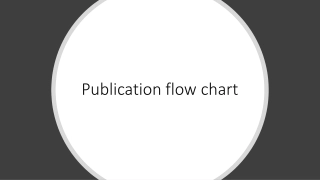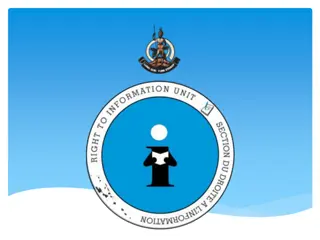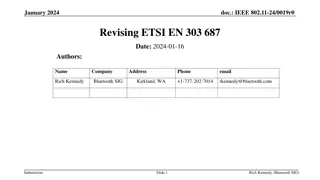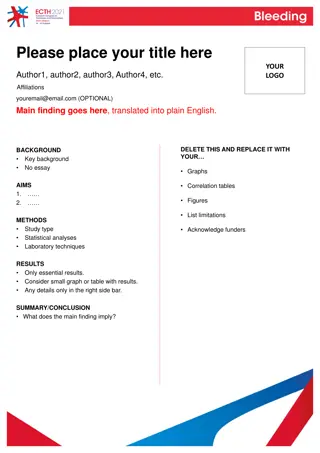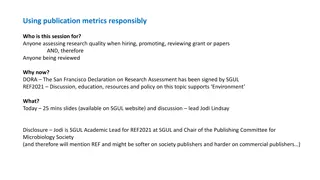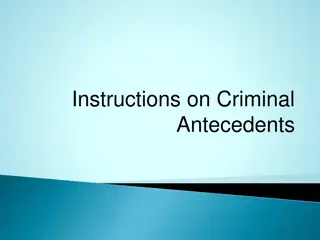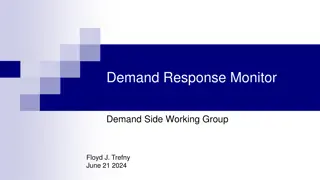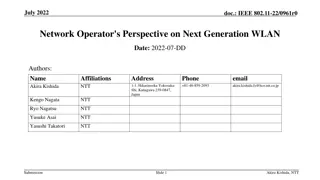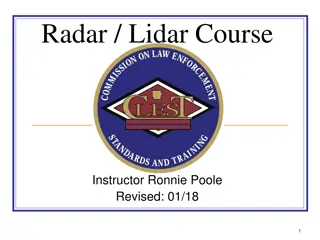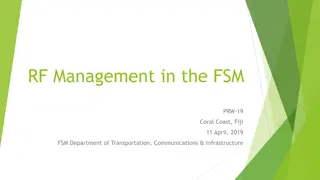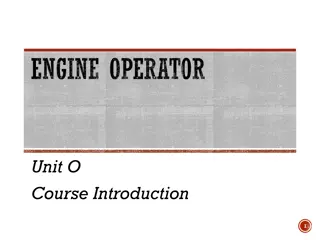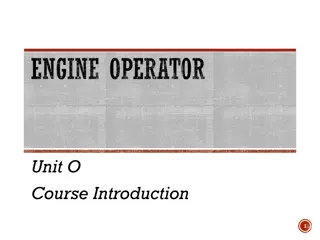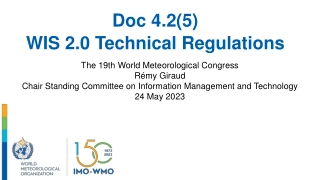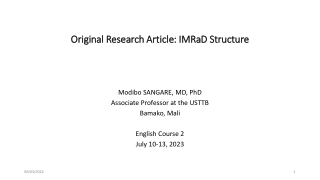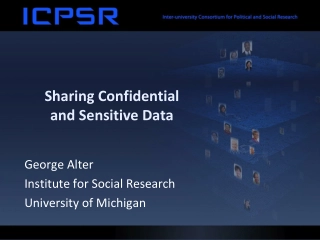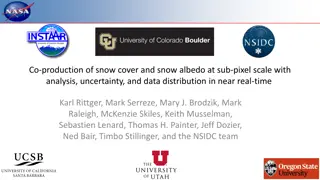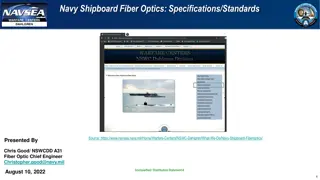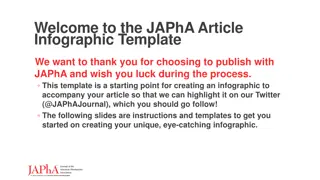
Hitachi Zaxis 30U-2 Hyraulic Excavator Operator’s Manual Instant Download (Publication No.EM1M722)
Please open the website below to get the complete manualnn//
Download Presentation

Please find below an Image/Link to download the presentation.
The content on the website is provided AS IS for your information and personal use only. It may not be sold, licensed, or shared on other websites without obtaining consent from the author. Download presentation by click this link. If you encounter any issues during the download, it is possible that the publisher has removed the file from their server.
E N D
Presentation Transcript
INTRODUCTION Read this manual carefully to learn how to operate and service your machine correctly. Failure to do so could result in personal injury or equipment damage. Warranty is provided as a part of Hitachi's support program for customers who operate and maintain their equipment as described in this manual. The warranty is explained on the warranty certificate which you should have received from your dealer. This standard specification machine can be operated under the following conditions without being modified. Atmospheric Temperature: 20 C to 40 C ( 4 F to 104 F) Altitude: 0 m to 1500 m (0 ft to 4900 ft) This warranty provides you the assurance that Hitachi will back its products where defects appear within the warranty period. In some circumstances, Hitachi also provides field improvements, often without charge to the customer, even if the product is out of warranty. Should the equipment be abused, or modified to change its performance beyond the original factory specifications, the warranty will become void and field improvements may be denied. Setting fuel delivery above specifications or otherwise overpowering machines will result in such action. In case the machine is used under conditions other than described above, consult your authorized dealer. This manual should be considered a permanent part of your machine and should remain with the machine when you sell it. This machine is of metric design. Measurements in this manual are metric. Use only metric hardware and tools as specified. SI Units (International System of Units) are used in this manual. For reference MKS system units and English units are also indicated in parentheses after the SI units. Example : 24.5 MPa (250 kgf/cm2, 3560 psi) Only qualified, experienced operators officially licensed (according to local law) should be allowed to operate the machine. Moreover, only officially licensed personnel should be allowed to inspect and service the machine. Prior to operating this machine in a country other than a country of its intended use, it may be necessary to make modifications to it so that it complies with the local standards (including safety standards) and re- quirements of that particular country. Please do not operate this machine outside of the country of its in- tended use until such compliance has been confirmed. Please contact Hitachi Construction Machinery Co., Ltd. or any of our authorized distributor or dealer if you have any questions concerning compliance. Right-hand and left-hand sides are determined by facing in the direction of forward travel. Write product identification numbers in the Machine Numbers section. Accurately record all the numbers to help in tracing the machine should it be stolen. Your dealer also needs these numbers when you order parts. If this manual is kept on the machine, also file the identification numbers in a secure place off the machine. All information, illustrations and specifications in this manual are based on the latest product information available at the time of publication. The right is reserved to make changes at any time without notice. 2007 Hitachi Construction Machinery Co., Ltd. All rights reserved.
https://www.ebooklibonline.com Hello dear friend! Thank you very much for reading. Enter the link into your browser. The full manual is available for immediate download. https://www.ebooklibonline.com
CONTENTS MACHINE NUMBERS Beware of Asbestos Dust..................................S-28 Precautions for Welding and Grinding..............S-29 Avoid Heating Near Pressurized Fluid Lines ....S-29 Avoid Applying Heat to Lines Containing Flammable Fluids .....................S-29 Remove Paint before Welding or Heating.........S-30 Prevent Battery Explosions...............................S-30 Precautions for Handling Refrigerant................S-31 Handle Chemical Products Safely ....................S-31 Dispose of Waste Properly................................S-32 SAFETY Recognize Safety Information ............................S-1 Understand Signal Words...................................S-1 Follow Safety Instructions...................................S-2 Prepare for Emergencies....................................S-2 Wear Protective Clothing....................................S-3 Protect Against Noise......................................... S-3 Inspect Machine..................................................S-3 Tidy Up Inside Operator s Space........................S-4 Use Handholds and Steps..................................S-4 Adjust the Operator s Seat..................................S-5 Ensure Safety Before Rising From or Leaving Operator s Seat...............................S-5 Fasten Your Seat Belt.........................................S-5 Move and Operate Machine Safely....................S-6 Operate Only from Operator s Seat....................S-7 Jump Starting......................................................S-7 Keep Riders Off Machine....................................S-7 Precautions for Operations.................................S-8 Investigate Job Site Beforehand.........................S-9 Protect Against Falling Stones and Debris.......S-10 Provide Signals for Jobs Involving Multiple Numbers of Machines...................S-10 Confirm Direction of Machine to be Driven.......S-10 Drive Machine Safely........................................S-11 Avoid Injury from Rollaway Accidents ..............S-13 Avoid Injury from Back-Over and Swing Accidents ..................................S-14 Keep Person Clear from Working Area............S-15 Never Position Bucket Over Anyone................S-15 Avoid Undercutting ...........................................S-15 Avoid Tipping....................................................S-16 Never Undercut a High Bank............................S-16 Dig with Caution................................................S-17 Operate with Caution........................................S-17 Avoid Power Lines............................................S-17 Precautions for Lightening................................S-18 Do Not Use for Craning Operations..................S-18 Protect Against Flying Debris ...........................S-18 Park Machine Safely.........................................S-19 Handle Fluids Safely Avoid Fires...................S-19 Safety Transporting ..........................................S-20 Practice Safe Maintenance...............................S-21 Warn Others of Service Work...........................S-22 Support Machine Properly................................S-23 Stay Clear of Moving Parts...............................S-23 Prevent Parts from Flying.................................S-23 Store Attachments Safely.................................S-24 Prevent Burns...................................................S-24 Replace Rubber Hoses Periodically.................S-25 Avoid High-Pressure Fluids..............................S-25 Prevent Fires ....................................................S-26 Evacuating in Case of Fire................................S-28 Beware of Exhaust Fumes................................S-28 SAFETY SIGNS...........................................S-33 COMPONENTS NAME ...............................1-1 OPERATOR S STATION Pedals, Levers and Monitor Panel......................1-2 Key Switch...........................................................1-4 Switch Panel........................................................1-4 Monitor Panel......................................................1-5 Coolant Temperature Gauge........................1-5 Fuel Gauge ...................................................1-5 System Failure Indicator ...............................1-6 Engine Oil Pressure Indicator.......................1-6 Overheat Indicator.........................................1-6 Fuel Level Indicator.......................................1-6 Alternator Indicator........................................1-7 Preheat Indicator...........................................1-7 Fast Travel Mode Indicator...........................1-7 Liquid Crystal display (LCD), Display Selection Switch, and Set Switch.....1-8 How to Operate Trip Meter..................................1-9 Auto-Idle Switch (Except ZX27U-2)...................1-11 Air Conditioner Operation..................................1-12 Tips for Air Conditioner Usage..........................1-14 Radio (Cab Equipped Machines)......................1-15 AM/FM Radio Operation ...................................1-16 Cab Door Release lever (Cab-equipped machines)...........................1-18 Opening/Closing Cab Front Window (Cab-equipped machines) .........................1-19 Adjusting Operator s Seat.................................1-20 Tool and Operator s manual Boxes ..................1-20 Emergency Exit (Cab-equipped machines) ......1-21 Seat Belt (Optional)...........................................1-22 Cab Light (Cab-equipped machines)................1-22 BREAK-IN Breaking in New Machine ...................................2-1 OPERATING THE ENGINE Before Starting Engine........................................3-1 Starting Engine....................................................3-2 Starting in Ordinary Temperature .................3-2 Starting in Cold Weather...............................3-3 Check Machine After Starting Engine.................3-4
CONTENTS Using Booster Batteries.......................................3-5 Stopping the Engine ............................................3-6 Securing the Machine to the Trailer for Transportation..........................................6-3 Unloading............................................................6-4 Lifting Machine with Crane..................................6-5 DRIVING THE MACHINE Travel Levers and Pedals....................................4-1 Travel Mode Switch.............................................4-3 Traveling on Soft Ground.....................................4-4 Raise One Track Using Boom and Arm..............4-4 Towing Machine...................................................4-5 Driving In Water or on Soft Ground.....................4-6 Precautions for Traveling on Slopes....................4-7 Parking and Stopping on Slopes.........................4-8 Parking on Slopes................................................4-8 MAINTENANCE Procedures...........................................................7-1 Prepare Machine for Inspection/Maintenance ....7-2 Opening/Closing Engine Access Covers............7-3 Opening/Closing Tank Covers............................7-4 Daily Inspection...................................................7-5 Periodic Replacement of Parts............................7-6 Maintenance Guide.............................................7-7 The Brand Names of Recommended Oils and Lubricants .....................................7-10 A. Greasing......................................................7-11 Front Joint Pins...........................................7-11 Bucket and Link Pins...................................7-14 Blade Pins...................................................7-14 Precautions for Front Attachment and Blade Removal ......................................7-14 Swing Bearing.............................................7-15 Swing Internal Gear ....................................7-16 Control Lever Universal Joint......................7-16 Tilt Mechanism............................................7-17 B. Engine.........................................................7-18 Engine Oil....................................................7-18 Change Engine Oil......................................7-18 Replace Engine Oil Filter ............................7-18 C. Transmission...............................................7-20 Travel Reduction Gear................................7-20 D. Hydraulic System........................................7-22 Inspection and Maintenance of Hydraulic Equipment .............................7-22 Check Hydraulic Oil Level...........................7-23 Drain Hydraulic Oil Tank Sump...................7-24 Change Hydraulic Oil..................................7-25 Clean Suction Filter.....................................7-28 Replace Full Flow Filter Element................7-29 Replace Pilot Filter Element........................7-30 Check Hoses and Lines..............................7-32 E. Fuel System................................................7-37 Check Water Separator ..............................7-38 Drain Fuel Tank Sump................................7-38 Replace Fuel Filter......................................7-39 Check Fuel Hoses.......................................7-40 F. Air Cleaner ..................................................7-41 Clean the Air Cleaner Element ...................7-41 Replace the Air Cleaner Element................7-41 G. Cooling System...........................................7-42 Check Coolant Level...................................7-43 Check and Adjust Fan Belt Tension............7-44 Change Coolant..........................................7-45 Clean Radiator Core...................................7-46 H. Electrical System.........................................7-47 Batteries......................................................7-47 OPERATING THE MACHINE Control Lever (ISO Excavator Pattern)................5-1 Control Lever (H-Pattern: HITACHI Excavator Pattern).......5-2 Control Lever (SAE-Backhoe Pattern) --- If Equipped (2 Way Multi Valve) ...............5-3 Boom-Swing Pedal ............................................5-4 Auxiliary Pedal (Optional)....................................5-5 Blade Lever..........................................................5-6 Precautions for Blade Operation .........................5-7 Pilot Control Shut-Off Lever.................................5-8 Warming Up Operation........................................5-9 Warming Up in Cold Weather..............................5-9 Auto-Idle Control (Except ZX27U-2) ..................5-10 Operating Backhoe............................................5-11 Grading Operation.............................................5-12 Avoid Driving Bucket Teeth Into Ground...........5-12 Avoid Abusive Operation...................................5-12 Avoid Striking with Bucket .................................5-13 Avoid Excavation Using Upperstructure and/or Boom Swing Power..........................5-13 Use Correct Track Shoe....................................5-13 Avoid Other than Specified Machine Operations...................................................5-14 Boom Cylinder May Hit Blade............................5-15 Avoid Hitting Blade with Bucket.........................5-16 Avoid Colliding Blade Against Rocks.................5-16 Avoid Colliding Boom Cylinder with Track.........5-16 Precautions for Installing Wide Bucket or Special Type Bucket................................5-16 Using Rubber Crawler .......................................5-17 Hydraulic Breaker (Optional).............................5-19 Crusher Operation (Optional)............................5-22 Precautions for After Operating the Machine....5-23 Auxiliary Flow Rate Control (Optional) (Except ZX27U-2)........................5-24 Emergency Boom Lowering Procedure.............5-25 TRANSPORTING Transporting by Road..........................................6-1 Trailer Loading/Unloading ...................................6-1 Loading................................................................6-2
CONTENTS I. Miscellaneous..............................................7-51 Check Bucket Teeth for Looseness and/or Wear...........................................7-51 Replace Bucket ...........................................7-53 Adjust Track Sag (Rubber Crawler) and Check for Damage .........................7-54 Replace Rubber Crawler.............................7-56 Check Track Sag (Steel Crawler) (Optional)......................7-58 Check and Replace Seat Belt .....................7-61 Check Air conditioner (Machine with Cab) ...............................7-62 Clean and Replace Air Conditioner Re-circulation Filter ...............................7-63 Clean Re-circulation Filter...........................7-63 Replace Re-circulation Filter .......................7-63 Clean Cab Floor ..........................................7-65 Check Injection Nozzle................................7-66 Check and Adjust Valve Clearance.............7-66 Check Injection Timing................................7-66 Measure Engine Compression Pressure ....7-66 Check Starter and Alternator.......................7-67 Check Radiator Cap....................................7-67 Check Tightening Torque of Bolts and Nuts.......................................7-68 Check Tilt Mechanism Fulcrum Bolts for Looseness.....................................7-71 Preparation for Inspection and Maintenance.....7-72 Tilting Floor Down..............................................7-74 Replacing Fuses..........................................7-50 CONSUMABLE PARTS LIST....................8-1 MAINTENANCE UNDER SPECIAL ENVIRONMENTAL CONDITIONS.......9-1 STORAGE Storing the Machine...........................................10-1 Removing the Machine From Storage...............10-2 TROUBLESHOOTING...............................11-1 SPECIFICATIONS Specifications.....................................................12-1 Working Ranges................................................12-6 Shoe Types and Applications..........................12-11 Bucket Types and Applications .......................12-16 REFERENCE Additional Counterweight...................................13-1 INDEX..............................................................14-1
MACHINE NUMBERS The manufacturing Nos. explained in this group is the individual number (serial No.) given to each machine and hydraulic components. These numbers are requested when inquiring any information on the machine and/or components. Fill these serial Nos. in the blank spaces in this group to immediately make them available upon request. MACHINE MODEL/TYPE: PRODUCT IDENTIFICATION NUMBER: M1M7-00-001 PRODUCT IDENTIFICATION NUMBER PRODUCT IDENTIFICATION NUMBER: NOTE: Marks to indicate the start and end of the PIN HCM1M700X00010001 PRODUCT IDENTIFICATION NUMBER (PIN) M1M7-00-002
SAFETY RECOGNIZE SAFETY INFORMATION These are the SAFETY ALERT SYMBOLS. When you see these symbols on your machine or in this manual, be alert to the potential for personal in- jury. Follow recommended precautions and safe operating practices. SA-688 UNDERSTAND SIGNAL WORDS On machine safety signs, signal words designating the degree or level of hazard - DANGER, WARNING, or CAUTION - are used with the safety alert symbol. DANGER indicates an imminently hazardous situation which, if not avoided, will result in death or serious in- jury. WARNING indicates a potentially hazardous situation which, if not avoided, could result in death or serious injury. CAUTION indicates a potentially hazardous situation which, if not avoided, may result in minor or moderate injury. DANGER or WARNING safety signs are located near specific hazards. General precautions are listed on CAUTION safety signs. Some safety signs don t use any of the designated signal words above after the safety alert symbol are occasionally used on this machine. SA-1223 To avoid confusing machine protection with personal safety messages, a signal word IMPORTANT indicates a situation which, if not avoided, could result in damage to the machine. NOTE indicates an additional explanation for an element of information. S-1
SAFETY FOLLOW SAFETY INSTRUCTIONS Carefully read and follow all safety signs on the machine as well as all safety messages in this manual. Safety signs must be installed, maintained and replaced if damaged. If a safety sign or this manual is damaged or missing, order a replacement from your authorized dealer in the same way you order other replacement parts (be sure to state machine model and serial number when or- dering). Allow only properly trained, qualified, authorized per- sonnel to operate the machine. SA-003 Learn how to correctly operate and service the machine. Keep your machine in proper working condition. Always operate the machine within the specification. Unauthorized modifications of the machine may impair the functions and/or safety and affect machine life and the warranty will become void. The safety messages in this SAFETY chapter are in- tended to illustrate basic safety procedures of machines. However it is impossible for these safety messages to cover every possible hazardous situation you may en- counter. If you have any questions concerning safety, you should first consult your supervisor and/or your au- thorized dealer before operating or performing mainte- nance work on the machine. PREPARE FOR EMERGENCIES Be prepared if a fire starts or if an accident occurs. Keep a first aid kit and fire extinguisher on hand. Thoroughly read and understand the label attached on the fire extinguisher and use it properly. To ensure that a fire-extinguisher can be always used when necessary, check and service the fire-extinguisher at the recommended intervals as specified in the fire-extinguisher manual. Establish emergency procedure guidelines to cope with any fire or accidents which may occur. SA-437 Keep emergency numbers for doctors, ambulance service, hospitals, and fire department posted near your telephone. S-2
SAFETY WEAR PROTECTIVE CLOTHING Wear close fitting clothing and safety equipment appro- priate to the job. You may need: A hard hat Safety belt Safety shoes Safety glasses, goggles, or face shield Heavy gloves Hearing protection Reflective clothing Wet weather gear Respirator or filter mask. Be sure to wear the correct equipment and clothing for the job. Do not take any chances. SA-438 Avoid wearing loose clothing, jewelry, or other items that can catch on control levers or other parts of the machine. Operating equipment safely requires the full attention of the operator. Do not wear radio or music headphones while oper- ating the machine. PROTECT AGAINST NOISE Prolonged exposure to loud noise can cause impairment or loss of hearing. Wear a suitable hearing protective device such as earmuffs or earplugs to protect against objectionable or uncomfortably loud noises. SA-434 INSPECT MACHINE If any abnormality is found, be sure to repair it immedi- ately before operating the machine. In the walk-around inspection, be sure to cover all points described in the PRE-START INSPECTION chapter in the operator s manual. SA-435 S-3
SAFETY TIDY UP INSIDE OPERATOR S SPACE Always keep inside the cab clean by observing instruc- tions below, to prevent any personal accidents from oc- curring. Remove mud and/or oily material from the shoe soles before entering the operator s space. If pedals are oper- ated without removing mud or oily matter, the foot may slip off the pedal, possibly creating a hazardous situa- tion. Do not leave parts and/or tools around the operator s seat. Do not keep a transparent water bottle in the cab. The transparent water bottle may concentrate the sun light like a lens, possibly causing a fire. Do not wear radio or music headphones and do not use a cell phone while traveling or operating the machine. Never allow hazardous materials such as combustible and/or explosive material in the operator s space. Do not leave cigarette lighters in the cab. If the tem- perature in the cab increases, the lighter may explode. USE HANDHOLDS AND STEPS Falling is one of the major causes of personal injury. When you get on and off the machine, always face the machine. Maintain a three-point contact with the steps and handrails. Do not use any controls as handholds. Never jump on or off the machine. Never mount or dismount a moving machine. In case adhered slippery material such as oil, grease, or mud is present on steps, handrails, or platforms, thoroughly remove such material. SA-439 S-4
SAFETY ADJUST THE OPERATOR'S SEAT A poorly adjusted seat for either the operator or for the work at hand may quickly fatigue the operator leading to mis-operation of the machine. The seat should be adjusted whenever the operator for the machine changes. The operator should be able to fully depress the ped- als and to correctly operate the control levers with his back firmly against the seat back. If not, readjust the seat forward or backward, and check again. SA-378 ENSURE SAFETY BEFORE RISING FROM OR LEAVING OPERATOR S SEAT Before rising from the operator s seat to open/close cab front window or to adjust the seat position, be sure to first lower the front attachment to the ground and then move the pilot control shut-off lever to the LOCK position. Failure to do so may allow the machine to unexpectedly move when a body part unintentionally comes in contact with a control lever, possibly resulting in serious personal injury or death. Before leaving the machine, be sure to first lower the front attachment to the ground and then move the pilot control shut-off lever to the LOCK position. Turn the key switch OFF to stop the engine. Before leaving the machine, close all windows, doors, and access covers and lock them up. FASTEN YOUR SEAT BELT If the machine should overturn, the operator may be- come injured and/or thrown from the cab. Additionally the operator may be crushed by the overturning machine, resulting in serious injury or death. Be sure to remain seated with the seat belt securely fastened whenever operating the machine. Prior to operating the machine, thoroughly examine webbing, buckle and attaching hardware. If any item is damaged or worn, replace the seat belt or component before operating the machine. Replace the seat belt at least once every 3 years regardless of appearance SA-237 S-5
SAFETY MOVE AND OPERATE MACHINE SAFELY Always be aware that there is a potential danger around the machine while operating the machine. Take extra care not to run over bystanders. Confirm the location of bystanders before moving, swinging, or operating the machine. Always keep the travel alarm and horn in working condition (if equipped). Before starting to move or operate the machine, sound the travel alarm and horn to alert bystanders. Use a signal person when moving, swinging, or oper- ating the machine in congested areas. Locate the signal person so that the operator can always witness the signal person. SA-1291 Coordinate the meanings of all safety signs, hand signals and marks before starting the machine. Ap- point a person who is responsible to make a signal and/or guidance. Never allow any persons or obstacles to enter the machine operation areas. Use appropriate illuminations. S-6
SAFETY OPERATE ONLY FROM OPERATOR'S SEAT Inappropriate engine starting procedures may cause the machine to runaway, possibly resulting in serious injury or death. Start the engine only when seated in the operator's seat. NEVER start the engine while standing on the tracks or on ground. Do not start engine by shorting across starter termi- nals. A hazardous situation may be created and/or possible damage to the machine may result. SA-444 Before starting the engine, confirm that all control lev- ers are in neutral. JUMP STARTING Failure to follow correct jump starting procedures could result in a battery explosion or a runaway machine. If the engine must be jump started, be sure to follow the instructions shown in the OPERATING THE EN- GINE chapter. The operator must be seated in the operator s seat so that the machine will be under control when the engine starts. Jump starting is a two-person operation. Never use a frozen battery. SA-032 Failure to follow correct jump starting procedures could result in a battery explosion or a runaway ma- chine. KEEP RIDERS OFF MACHINE Riders on machine are subject to injury such as being struck by foreign objects and being thrown off the machine. Riders also obstruct the operator s view, resulting in the machine being operated in an unsafe manner. Only allow the operator is allowed on the machine. Keep riders off. SA-1292 S-7
SAFETY PRECAUTIONS FOR OPERATIONS Thoroughly make certain safety at the work site before starting operations. Especially always observe the fol- lowing points. Be sure to wear close fitting clothing and required safety items, such as a hard hat, when operating the machine. Keep all bystanders and unnecessary objects out of and away from the machine working areas. Always beware of the surroundings while operating the ma- chine. Take care not to allow the rear part of the up- perstructure to come in contact with objects when swinging the machine in a small area. When loading a dump truck, bring the bucket from the rear side of the dump truck to avoid moving the bucket over the dump truck cab or over any co-workers. M586-12-012 S-8
SAFETY INVESTIGATE JOB SITE BEFOREHAND When working at the edge of an excavation or on a road shoulder, the machine could tip over due to collapse of the ground, possibly resulting in serious injury or death. Investigate the configuration and ground conditions of the job site beforehand to prevent the machine from falling and to prevent the ground, stockpiles, or banks from collapsing. Make a work plan. Use machines appropriate to the work and job site. Reinforce ground, edges, and road shoulders as necessary. Keep the machine well back from the edges of excavations and road shoulders. When working on an incline or on a road shoulder, employ a signal person as required. SA-1293 Never allow bystanders to enter the working area such as swing radius or traveling range. When the footing is weak, reinforce the ground before starting work. When working on frozen ground, be extremely alert. As ambient temperatures rise, footing may become loose and slippery. When operating the machine near open flame, sparks, and/or dead grass, a fire may easily break out. Use special care not to cause a fire. Make sure the work site ground has sufficient strength to firmly support the machine. When working close to an excavation or on road shoulders, operate the ma- chine with the tracks positioned perpendicular to the cliff face with travel motors at the rear and with the blade at the front, so that the machine can more easily evacuate if the cliff face collapses. If working at the bottom of a cliff or on a high bank is required, be sure to investigate the area first and con- firm that no danger of the cliff or bank collapsing exists. If any possibility of cliff or bank collapsing exists, do not work in that area. Soft ground may collapse when operating the machine on it, possibly causing the machine to tip over. When working on a soft ground is required, be sure to rein- force the ground first using large pieces of steel plates strong enough and firm to easily support the machine. Note that there is always a possibility of machine tip- ping over when working on rough terrain or on slopes. Prevent machine tipping over from occurring. Operate the machine slowly to ensure safe operation. M586-05-021 S-9
SAFETY PROTECT AGAINST FALLING STONES AND DEBRIS Confirm that your machine is FOPS cab equipped before working in areas where the possibility of falling stones or debris exist. PROVIDE SIGNALS FOR JOBS INVOLVING MULTIPLE NUMBERS OF MACHINES In case more than one machine is operated in the same job site, accidental collision between machines may cause serious injury or death. For jobs involving multiple numbers of machines, provide signals commonly known by all personnel involved. Also, appoint a signal person to coordinate the job site. Make sure that all personnel obey the signal person s direc- tions. SA-481 CONFIRM DIRECTION OF MACHINE TO BE DRIVEN Incorrect travel pedal/lever operation may result in seri- ous injury or death. Before driving the machine, confirm the position of the undercarriage in relation to the operator s position. If the travel motors are located towards the front of the cab, the machine will move in the reverse direction when travel pedals/levers are operated. SA-1294 S-10
Suggest: If the above button click is invalid. Please download this document first, and then click the above link to download the complete manual. Thank you so much for reading
SAFETY DRIVE MACHINE SAFELY Use a signal person when traveling the machine along road shoulders or in congested areas. Driving the machine in the incorrect direction may result in serious injury or death and/or severe damage to property. A Before driving the machine, always confirm that the travel pedals/levers direction corresponds to the direc- tion you wish to drive. SA-1295 Be sure to detour around any obstructions. Avoid traveling over obstructions. Soil, fragments of rocks, and/or metal pieces may scatter around the machine. Do not allow personnel to stay around the machine while traveling. Driving on a slope may cause the machine to slip or overturn, possibly resulting in serious injury or death. Never attempt to ascend or descend 30 degrees or steeper slopes. Be sure to fasten the seat belt. When driving up or down a slope, keep the bucket facing the direction of travel, approximately 200 to 300 mm (8 to 12 in) (A) above the ground. If machine starts to skid or becomes unstable, imme- diately lower the bucket to the ground and stop. Driving across the face of a slope or steering on a slope may cause the machine to skid or turnover. If the direction must be changed, move the machine to level ground, then, change the direction to ensure safe op- eration. Avoid swinging the upperstructure on slopes. Never attempt to swing the upperstructure downhill. The machine may tip over. If swinging uphill is unavoidable, carefully operate the upperstructure and boom at slow speed. If the engine stalls on a slope, immediately lower the bucket to the ground. Return the control levers to neu- tral. Then, restart the engine. Be sure to thoroughly warm up the machine before ascending steep slopes. If hydraulic oil has not warmed up sufficiently, sufficient performance may not be obtained. A SA-1296 SA-441 SA-442 S-11
https://www.ebooklibonline.com Hello dear friend! Thank you very much for reading. Enter the link into your browser. The full manual is available for immediate download. https://www.ebooklibonline.com

